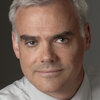

The Federal Reserve held interest rates steady Wednesday, but indicated a rate cut could come as early as September if inflation continues to moderate.
Prices in June were up just 2.5% from a year ago, according to the central bank's preferred inflation yardstick. While that's higher than the Fed's target of 2%, it suggests inflation continues to move in the right direction, clearing the way for the Fed to lower borrowing costs in the near future.

 on the wall behind the bed." width="" />
on the wall behind the bed." width="" />
"The broad sense of the committee is that the economy is moving closer to the point where it would be appropriate to reduce our policy rate," Fed chairman Jerome Powell told reporters. "A reduction in our policy rate could be on the table as soon as the next meeting in September.”
For now, Fed policymakers voted unanimously to keep their benchmark rate between 5.25 and 5.5%, where it's been for the last year. That matches the highest level in more than two decades, making it more expensive to get a car loan, finance a business or carry a balance on your credit card.
While Fed officials previously worried that cutting interest rates prematurely might rekindle inflation, they're increasingly confident that price stability is close to being restored. They're also concerned that waiting too long to cut rates could needlessly weaken the job market.
The unemployment rate inched up to 4.1% in June — from a half-century low of 3.4% in 2023. Data for last month will be released on Friday.
"What we think we’re seeing is a normalizing labor market, and we’re watching carefully," Powell said. "If it starts to show more than that, then we’re well-positioned to respond.” .
A cooling job market was evident in a report from the Labor Department Wednesday, showing employers' labor costs are growing more slowly. The cost of wages and benefits rose 4.1% for the twelve months ending in June, compared to 4.5% the previous year.
Moderating labor costs should help to keep a lid on inflation, especially in the labor-intensive service sector.
A September rate cut would come in the thick of the fall presidential campaign, but Powell insisted that the political calendar would not be a factor in the central bank's decision-making.
"We never use our tools to support or oppose a political party, a politician or any political outcome," Powell said. "If we get it right, the economy will be stronger, we’ll have price stability. People will find jobs. Wages will rise in real terms. Everyone will benefit."